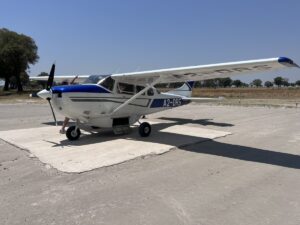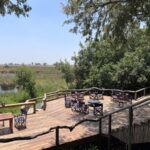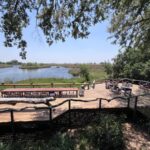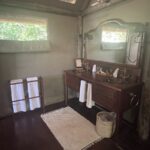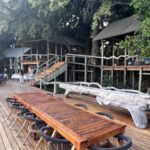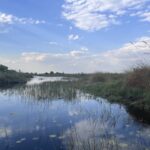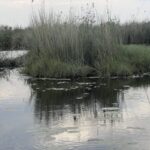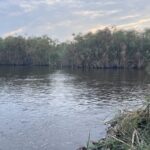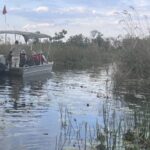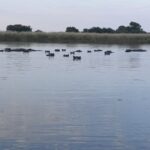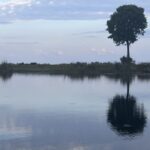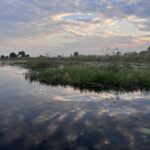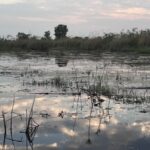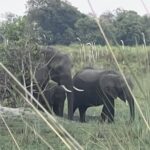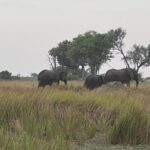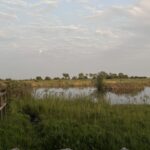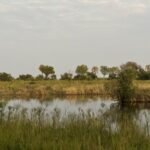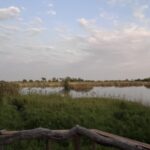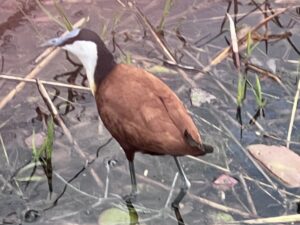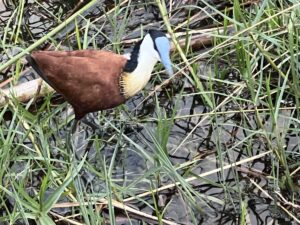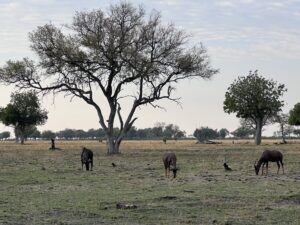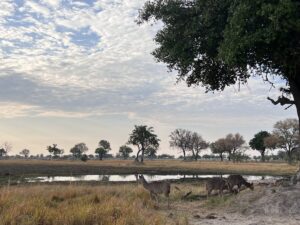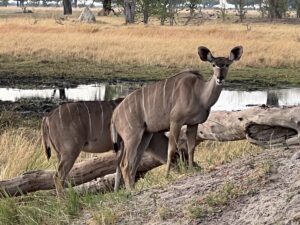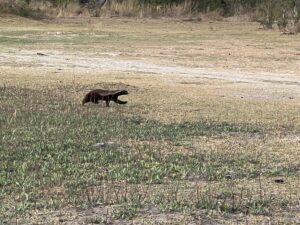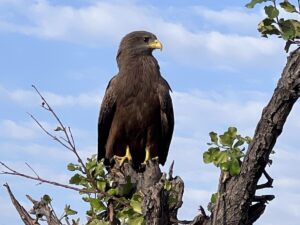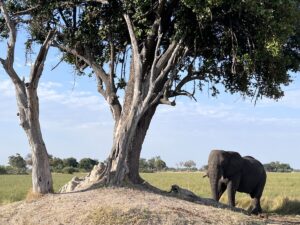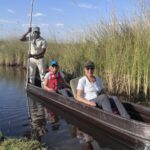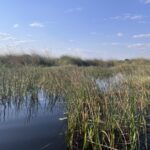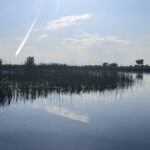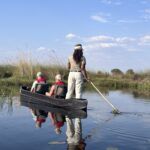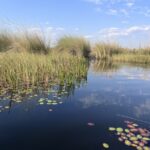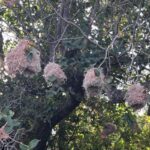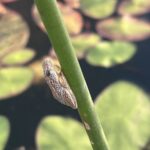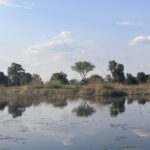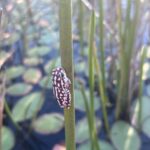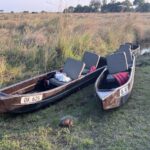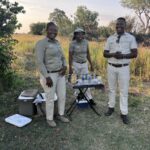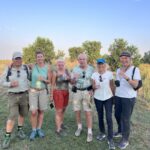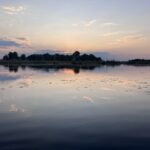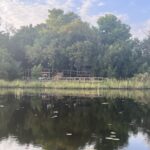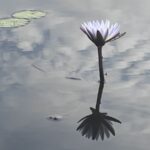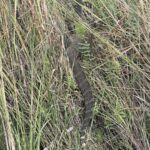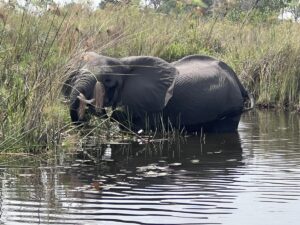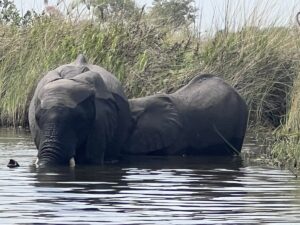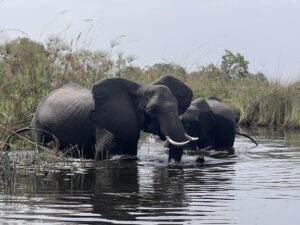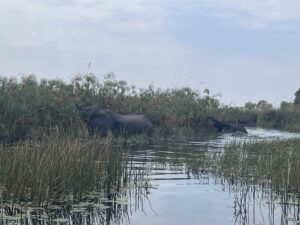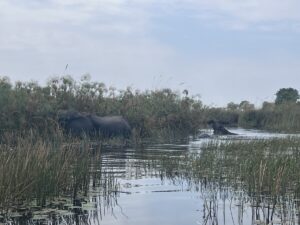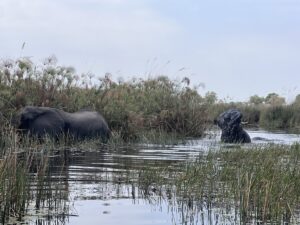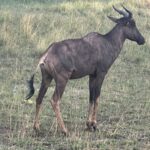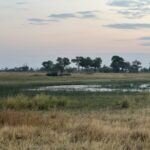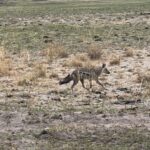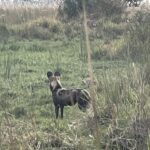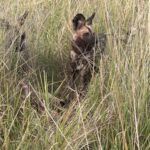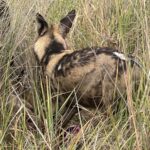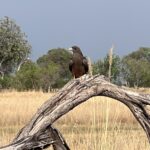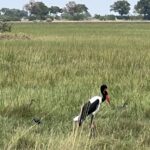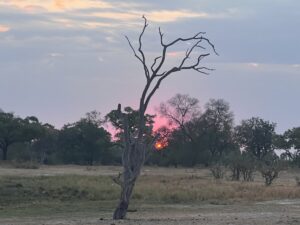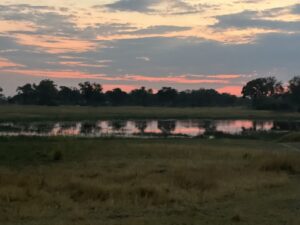Off to the Okavango Delta!! And our new camp Shinde.
The Okavango Delta is the largest intact inland delta in the world, and is exceptionally rich in wildlife. Situated deep within the Kalahari Basin, the Delta is characterized by meandering deep water channels lined with papyrus reeds that open up into larger lagoons and islands; these in turn give way to seasonal floodplains and eventually large tracts of dry land where animals congregate. Fed by the Okavango River and rains from the highlands of Angola, the Delta can vary in size from 15,000 sq km (5,800 sq mi) during drier periods to a staggering 22,000 sq kms (8,500 sq mi) during wetter periods.
The game viewing depends on season, floodwaters and food availability but it is one of the most sought after wilderness destinations in the world. In addition to big game viewing, visitors come to experience the supreme tranquility and serenity of an untouched delta, and scenes of extraordinary natural beauty. It consistently produces very good predator action with considerable herds of ungulates and elephants, as well as a reintroduced (predominantly white) rhino population.
Shinde’s excellent location in the Okavango Delta ensures a combination of permanent water access for year-round water activities and large dry areas for game drive routes. This blend of environments provides the habitat for a consistently wide variety of wildlife, including the elusive sitatunga antelope and a healthy population of leopards.
The camp’s unique main area is built in a “treehouse style” comprising of lounges, indoor and outdoor dining areas, and a fire deck all with beautiful views over a permanent lagoon and under the shade of ebony and mangosteen trees. The tents and main area provide a luxury experience with a touch of historical charm.
Shinde is situated on a private concession which allows guided walks, mokoro excursions and night drives in addition to game drives and motorboat trips.
Motorboats or mokoro provide a chance to experience the incredible bird, plant and reptile species found in the aquatic habitat of the Okavango Delta. Game drives are conducted by a personal guide in comfortable, specially designed game drive vehicles.
We motored down several small channels until we reached the wide open water area. Here there were a large number of hippos relaxing in the water. However we may have got too close to one of them because this particular hippo gave chase. It was a little unnerving!
One of the iconic animals of the Okavango Delta has to the Hippo, and there are many of these ugly, rotund creatures that call the Delta home. Their deep honking noises can often be heard booming across the lagoons. A honking laugh, followed by a derisive snort announces the presence of a pod of hippopotamus in a shallow lagoon in the Delta. These large pachyderms are wide spread in the Delta. Depending on where they live in the Delta, the Hippo’s habits will be differently affected by the seasonal flooding of the Okavango. Hippos are considered to be one of the most dangerous animals in Africa due to their unpredictability. They can easily capsize a canoe or boat and caution should be taken not to approach them too closely when you are on a boating trip. Hippos are generally found in small family groups called pods. These are presided over by a dominant male who will fight other Hippo for territory. Hippos are found mostly in the areas of permanent water, Lagoons and deep channels in the Delta.
They spend most of the day submerged in water, with just their heads sticking out. They can stay submerged for up to six minutes at a time. In areas where they are undisturbed by human activity, they often will lie out in the morning sunshine.
They emerge at night to graze on the flood plains and islands in the Delta. They usually spend between 4 and six hours eating and can wander up to 4km on their nightly round. Hippos usually enter and leave the water in the same place, creating well worn Hippo paths in the dense reeds through the Delta.
These beautiful birds are seen often in the Delta.
Game viewing included tsessebes, kudus, one solitary honey badger and the usual elephants!! Now I’m really sounding blasé!!!
We spent a lovely afternoon in the mokoro being propelled forward by our lovely guide Ortiz. We spotted painted african reed frogs and saw lots of lovely fauna and flora. We finished our ride by having a sundowner with all our new friends. What a wonderful way to finish the day, watching the sun go down over the Okavango Delta!
The next morning I went with Ortiz for an early boat ride. We were so lucky on our way back to camp to be stopped in a narrow channel to allow an elephant with her two calves to cross the channel. The youngest calf then decided it was play time and so had a ball squirting water everywhere and wallowing in the water. We were up close and personal and it was amazing. You can’t put into words what this experience was like. Finally the elephants made their way on to the other side of the bank and continued on their way. Such wonderful majestic creatures.
I should mention that that was a lot of noise outside our tent last night but when looking outside I couldn’t see anything. Suffice to say that when I looked outside the tent at 530am there was an elephant munching away on a tree just by our verandah. We couldn’t leave the tent until our guide, Muffin, had chased it away. It was a youngish male and it was not happy!!! Again such a close up and personal experience!!!
Our last evening game drive at Shinde included encounters with tsessebe which resemble wildebeest, jackels , ostrich and african wild dogs that had just caught an impala and were in the process of ripping it apart. There was blood everywhere, and the dogs kept an eye out to ensure that no other animals had a chance to get a feed!! A spectacle that is part of the circle of life.
Beautiful sunset at Shinde on our last night here and a sundowner on the savannah. Another beautiful stay in Botswana.


